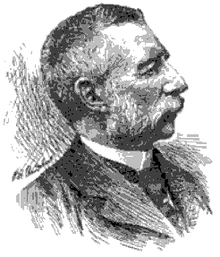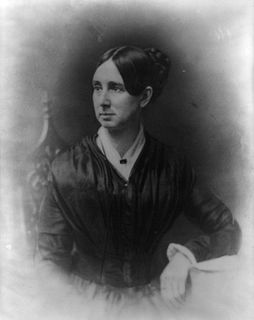
Dorothea Lynde Dix was an American advocate on behalf of the indigent mentally ill who, through a vigorous and sustained program of lobbying state legislatures and the United States Congress, created the first generation of American mental asylums. During the Civil War, she served as a Superintendent of Army Nurses.

Insanity, madness, and craziness are terms that describe a spectrum of individual and group behaviors that are characterized by certain abnormal mental or behavioral patterns. Insanity can be manifest as violations of societal norms, including a person or persons becoming a danger to themselves or to other people. Conceptually, mental insanity also is associated with the biological phenomenon of contagion as in the case of copycat suicides. In contemporary usage, the term insanity is an informal, un-scientific term denoting "mental instability"; thus, the term insanity defense is the legal definition of mental instability. In medicine, the general term psychosis is used to include the presence either of delusions or of hallucinations or both in a patient; and psychiatric illness is "psychopathology", not mental insanity.

John Maynard Woodworth was an American physician and member of the Woodworth political family. He served as the first Supervising-Surgeon General under president Ulysses S. Grant, then changed to Surgeon General of the United States Marine Hospital Service from 1871 to 1879.
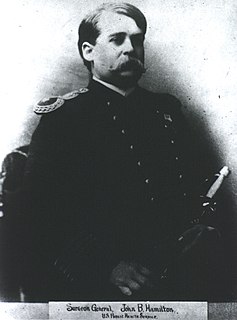
John B. Hamilton was an American physician and soldier. He was appointed the second Surgeon General of the United States from 1879 to 1891.

Daniel Hack Tuke was an English physician and expert on mental illness.

William Crawford Gorgas KCMG was a United States Army physician and 22nd Surgeon General of the U.S. Army (1914–1918). He is best known for his work in Florida, Havana and at the Panama Canal in abating the transmission of yellow fever and malaria by controlling the mosquitoes that carry these diseases. At the time, his strategy was greeted with considerable skepticism and opposition to such hygiene measures. However, the measures he put into practice as the head of the Panama Canal Zone Sanitation Commission saved thousands of lives and contributed to the success of the Canal's construction.
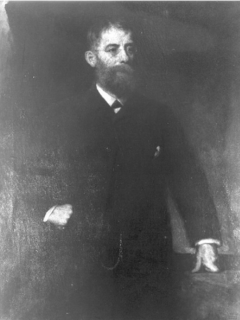
John Call Dalton was an American physiologist and vivisection activist who became the first full-time professor of physiology in the United States.
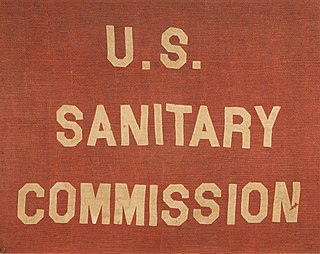
The United States Sanitary Commission (USSC) was a private relief agency created by federal legislation on June 18, 1861, to support sick and wounded soldiers of the United States Army during the American Civil War. It operated across the North, raised an estimated $25 million in Civil War era revenue and in-kind contributions to support the cause, and enlisted thousands of volunteers. The president was Henry Whitney Bellows, and Frederick Law Olmsted acted as executive secretary. It was modeled on the British Sanitary Commission, set up during the Crimean War (1853-1856), and from the British parliamentary report published after the Indian Rebellion of 1857.
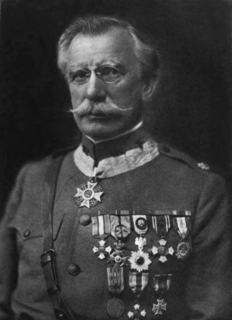
Louis Livingston Seaman, FRGS was an American surgeon, born in Newburgh, New York.

Regimen sanitatis Salernitanum, Latin: The Salernitan Rule of Health is a medieval didactic poem in hexameter verse. It is allegedly a work of the Schola Medica Salernitana.

William Alexander Hammond was an American military physician and neurologist. During the American Civil War he was the eleventh Surgeon General of the United States Army (1862–1864) and the founder of the Army Medical Museum.
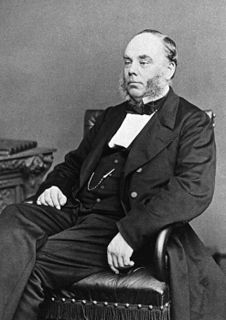
Robert Gardiner Hill MD was a British surgeon specialising in the treatment of lunacy. He is normally credited with being the first superintendent of a small asylum to develop a mode of treatment in which reliance on mechanical medical restraint and coercion could be dropped altogether. In practice he reached this situation in 1838.

The state of medical knowledge at the time of the Civil War was extremely primitive. Doctors did not understand infection, and did little to prevent it. It was a time before antiseptics, and a time when there was no attempt to maintain sterility during surgery. No antibiotics were available, and minor wounds could easily become infected, and hence fatal. While the typical soldier was at risk of being hit by rifle or artillery fire, he faced an even greater risk of dying from disease.

Sir John Charles Bucknill was an English psychiatrist and mental health reformer. He was the father of judge Sir Thomas Townsend Bucknill QC MP.
The New York State Hospital Commission is a subdivision of the New York State Department of Health. It was called the State Commission in Lunacy from 1895 to 1912.

The history of medicine in the United States encompasses a variety of periods and approaches to health care in the United States from colonial days to the present, ranging from early folk remedies to the increasing professionalization and managed care of modern medicine.
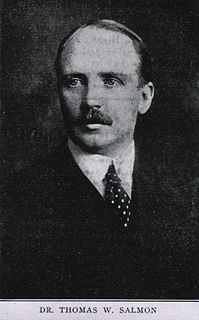
Thomas William Salmon, M.D. (1876-1927) was a leader of the mental hygiene movement in the United States in early twentieth century.

Jedediah Hyde Baxter was a career United States Army officer and doctor who attained the rank of brigadier general as Surgeon General of the United States Army.

Norman Chevers (1818–1886) was an English physician and surgeon of the Bengal Medical Service. He is known for research on constrictive pericarditis.
Azel Ames was an American physician, author, sanitation authority, and legislator.
